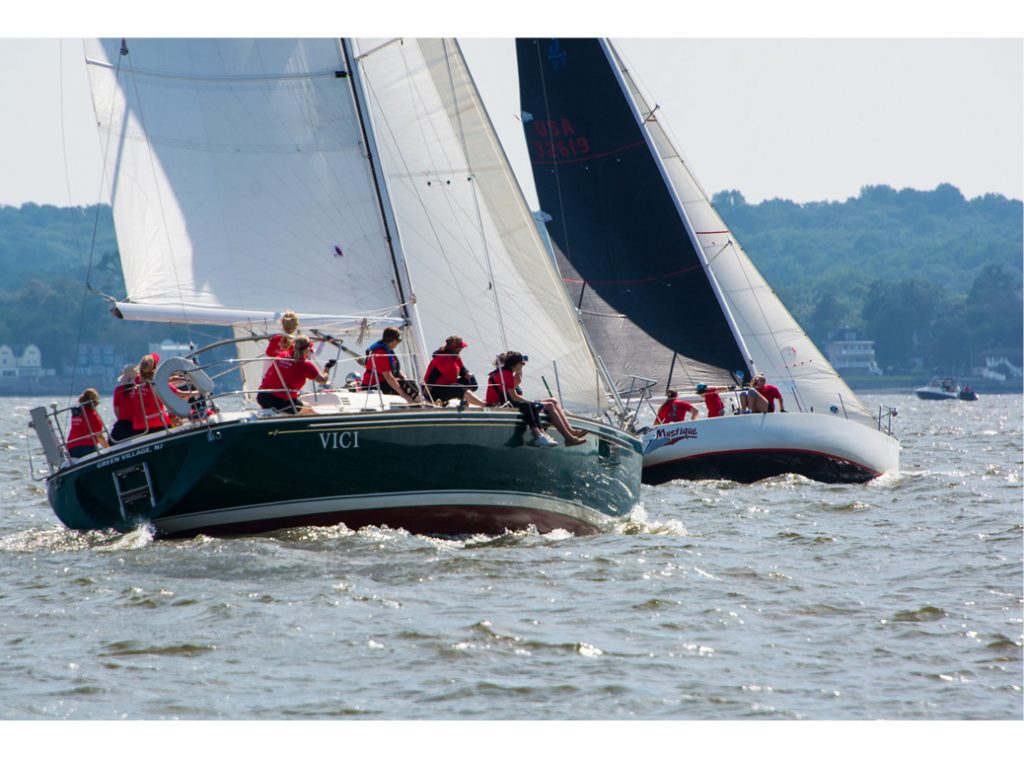Last month we discussed the tactical moves available to a boat that is converging on port tack on a beat. There is a similar set of tactics for the boat on starboard tack (S). Since S has the right of way, she usually has more influence over what happens when the boats come together. However, simply having the right of way is not necessarily enough to ensure that you can sail in the direction you want after the boats engage. You still need some good moves.
Several things about starboard tack are the same as when you’re on port. First and foremost, you must know your strategic plan before you reach the other boat (so you can base your tactics on this). Second, it’s critical to keep a good lookout for boats on the opposite tack. Some sailors think this is not so important when you have the right of way but, tactically, it’s not good to be surprised by a boat on either tack. Finally, you want to meet the other boat with a little extra speed so you have better maneuverability.
It’s good to have the right of way because the port tacker (P) must keep clear of you, but this also means that your course changes are restricted by rule 16 (Changing Course). If P is ducking you, for example, you must make sure that when you alter your course this does not force P to change her course immediately to keep clear. Either change your course far enough from P that she does not have to react immediately, or change it when P is not pointing at you (e.g. when she has borne off so her bow is aiming behind you).

Even though you have the right of way on starboard tack, you still need to keep a good lookout for converging port tackers. That’s because if one boat tacks on your lee bow it could disrupt your entire gameplan. Prevent this by keeping a good lookout to leeward. © Jeff Smith/jeffsmithphoto.net
Since converging on starboard tack does give you at least a bit more influence over most situations, when you are on the right side of a competitor you have the ‘starboard-tack advantage.’
Favoring the right side of the course. It should be easy to protect the right because you’re already on that side of the other boat. However, this isn’t always the case because the right-of-way boat has limitations on her ability to change course near the port tacker. Here are your three basic options:
Tack before you meet the other boat. This makes sense because if you like the right you should probably go there as soon as you can. This tactic avoids the risks associated with lee-bow tacks and allows you to maintain the starboard-tack advantage until a later crossing. Just make sure you tack far enough to leeward of P that you can tack again at some point without tacking too close to her.
Tack in a safe leeward position. You want to end up close on P’s lee bow, but there are a few risks when doing it from this side. If you tack too soon, P will be able to head up and gain enough separation to wind- ward that she may be able to ‘live’ there for quite a while (pinning you on port tack in the process). If you tack too late, you may a) foul P if she’s ducking and has to change course to avoid you; or b) allow P to get a leeward overlap and either luff you or sail through you and pinch you off.
This article originally appeared in David Dellenbaugh’s Speed & Smarts, The newsletter of how-to tips for racing sailors. If you want to sail faster and smarter, log onto SpeedandSmarts.com. ■
A resident of Easton, CT, Dellenbaugh was tactician and starting helmsman for America3’s successful defense of the America’s Cup in 1992. He’s a Lightning World Champion, two-time Congressional Cup winner, seven-time Thistle National Champion, two-time winner of the Canada’s Cup, three-time Prince of Wales U.S. Match Racing Champion, and a winner of the U.S. Team Racing Championships for the Hinman Trophy.
Even though you have the right of way on starboard tack, you still need to keep a good lookout for converging port tackers. That’s because if one boat tacks on your lee bow it could disrupt your entire gameplan. Prevent this by keeping a good lookout to leeward. © Jeff Smith/jeffsmithphoto.net
